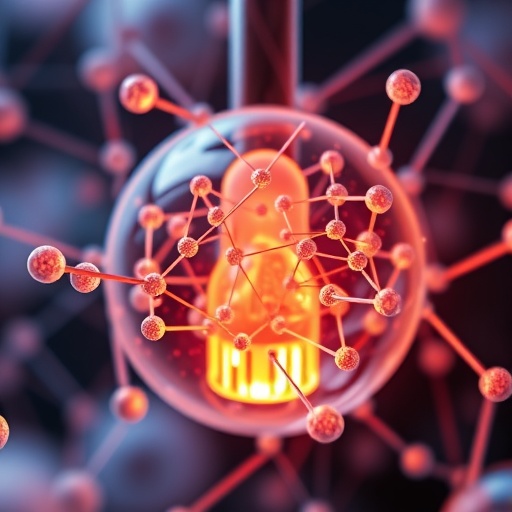In recent years, the pressing need for sustainable and renewable energy sources has intensified, directing scientific focus toward biomass as a viable alternative to fossil fuels. One of the most intriguing developments in this domain is the novel electrochemical methods applied to lignocellulosic biomass. Researchers have unveiled an innovative approach that not only enhances the pretreatment processes of these complex materials but also significantly boosts microbial oil production, aligning with the global imperative of energy sustainability.
Lignocellulosic biomass, comprising plant-derived materials such as wood, straw, and agricultural residues, represents a substantial reservoir of organic matter. However, its complex structure poses significant challenges in terms of biomass conversion to biofuels and other valuable products. Traditional methods of pretreatment often fall short of efficiently breaking down lignocellulose, resulting in lower yields of fermentable sugars and hence limiting microbial oil production. Therefore, refinement of pretreatment methods is essential for unlocking the full potential of lignocellulosic biomass.
In this groundbreaking study, Georgiadou, Giannakis, and Ioannidou, along with their research team, explored the efficacy of innovative electrochemical techniques on lignocellulosic biomass pretreatment. These methods leverage the principles of electrochemistry to enhance the accessibility of cellulose and hemicellulose, the primary components that constitute lignocellulosic materials. By employing electrochemical activation, the structural integrity of biomass is selectively altered, facilitating more efficient enzymatic hydrolysis, which is a necessary step toward converting biomass into fermentable sugars.
Remarkably, the team discovered that the application of electrochemical techniques not only improves the efficiency of biomass pretreatment but also enhances the overall yield of microbial oil. This aspect of their research holds significant implications for the biofuels industry. Microbial oil, produced by various microorganisms through the fermentation of sugars derived from biomass, can serve as a renewable substitute for conventional fossil fuel-derived oils. Thus, the findings pave the way for a dual benefit: enhanced pretreatment coupled with improved oil yields.
Electrochemical methods are versatile and can be adjusted to target specific biomass types or desired outcomes. Various parameters such as voltage, current density, and treatment duration can be optimized to maximize the efficiency of the lignocellulosic substrate breakdown. The adaptability of these methods allows researchers to tailor the process to meet specific industry needs or environmental constraints, presenting a flexible solution to an otherwise rigid problem.
Moreover, the study emphasizes the environmental benefits of utilizing electrochemical approaches for biomass pretreatment. As society grows increasingly conscious of carbon footprints and ecological impacts, the move toward electrochemical methods signifies a step in the right direction. This approach largely avoids the use of harsh chemicals often employed in traditional pretreatment processes, contributing to a greener and more sustainable pretreatment pathway.
Additionally, the research highlights the significance of microbial oil produced from pretreated lignocellulosic biomass. The study notes that the microbial oil not only serves as a renewable fuel but can also be utilized as a feedstock for the production of various bioproducts, including biodiesel, thus further diversifying its application. This multifaceted approach enhances the viability of microbial oil as a competitive alternative in the renewable energy landscape.
The electrochemical methods investigated also open a dialogue regarding scalability and commercialization. As the biorefinery concept gains traction, integrating these advanced pretreatment techniques into scalable processes will be crucial for their success. This research illuminates the pathway toward making these innovative methods commercially viable, promising an economic boost for businesses seeking to pivot toward greener energy production.
In conclusion, the research conducted by Georgiadou and her colleagues not only showcases the potential of novel electrochemical methods for the pretreatment of lignocellulosic biomass but also heralds a new era in renewable energy production. As scientists continue to refine these techniques, the prospect of transforming waste biomass into valuable biofuels and products appears increasingly achievable. The implications of these advancements could be monumental, triggering a significant shift in how the world harnesses and utilizes biomaterials.
The pursuit of a sustainable future involves much more than just developing new technologies; it necessitates a comprehensive understanding of the systems at play. This research stands as a testament to the interdisciplinary nature of modern science, where chemistry, biology, and environmental considerations converge to tackle one of humanity’s most pressing challenges. Continued exploration in this field could very well lead to groundbreaking solutions that not only address energy needs but also promote a cleaner and greener planet.
Consequently, embracing innovative approaches such as these may very well define the next generation of renewable energy production. Not only are these advancements paving a path to renewable energy sources, but they are also fostering a mindset geared toward sustainability and environmental stewardship. As global energy demands soar, the world will be watching closely as these research findings translate into real-world applications that could change the energy landscape forever.
The ongoing commitment to research and innovation in this space is essential. Scientists and engineers must continue to collaborate and push the boundaries of what is possible. Whether through improvement of electrochemical methods or the exploration of complementary technologies, the quest for efficiency and sustainability must remain at the forefront. As these methodologies are further developed and implemented, the hope is for a future where renewable energy is accessible, effective, and integral to our daily lives.
Subject of Research: Novel electrochemical methods applied to lignocellulosic biomass for enhanced pretreatment and microbial oil production.
Article Title: Application of Novel Electrochemical Methods on Lignocellulosic Biomass for Enhanced Pretreatment and Microbial Oil Production.
Article References: Georgiadou, E., Giannakis, N., Ioannidou, S.M. et al. Application of Novel Electrochemical Methods on Lignocellulosic Biomass for Enhanced Pretreatment and Microbial Oil Production.
Waste Biomass Valor (2025). https://doi.org/10.1007/s12649-025-03379-w
Image Credits: AI Generated
DOI: https://doi.org/10.1007/s12649-025-03379-w
Keywords: Lignocellulosic biomass, electrochemical methods, pretreatment, microbial oil production, sustainable energy
Tags: biomass pretreatment innovationscellulose and hemicellulose accessibilitychallenges in biomass conversionelectrochemical pretreatment methodselectrochemistry in biomass researchenhancing biofuel yieldsinnovative energy sustainability solutionslignocellulosic biomass conversionlignocellulosic material processingmicrobial oil production techniquesrenewable energy from biomasssustainable energy sources





